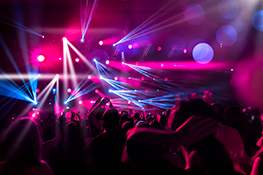Stage Lighting Design: The Art of Illumination
The Unsung Hero of Every Great Performance
Stage lighting is more than just illuminating a stage; it’s a powerful storytelling tool. It sets the mood, guides the audience’s eye, and enhances the emotional impact of every performance. A skilled lighting designer uses light as a paintbrush, crafting visual narratives that complement the script, acting, and overall production design. This article delves into the artistry and technical expertise behind creating captivating stage lighting.
Understanding the Fundamentals: Light, Color, and Shadow
Effective stage lighting hinges on a deep understanding of the properties of light. This involves mastering the manipulation of color temperature (from warm to cool), intensity (creating contrast and focus), and the skillful use of shadows to create depth and intrigue. The choice of light fixture – from spotlights and wash lights to moving lights and LED strips – is crucial in achieving the desired effect. Each fixture offers unique capabilities impacting beam angle, color mixing, and intensity control.
The Role of Color in Evoking Emotion
Color psychology plays a vital role in stage lighting design. Different colors evoke distinct emotions and can dramatically alter the atmosphere. Warm colors like reds and oranges can create feelings of passion and intensity, while cool colors like blues and greens can suggest calmness or melancholy. The skillful blending and contrasting of colors allows for nuanced emotional expression, subtly influencing the audience’s perception. Consider the impact of a deep crimson wash during a dramatic monologue compared to a cool, ethereal blue during a romantic scene.
Technical Aspects: Consoles, Fixtures, and Control
Behind the artistry lies complex technical mastery. Modern lighting consoles offer sophisticated control over multiple fixtures, allowing for precise programming and dynamic changes throughout the show. Understanding the intricacies of DMX (Digital Multiplex) protocols, lighting plots, and cue sheets is crucial for coordinating lighting changes with the action on stage. The selection of appropriate fixtures for the venue, show requirements, and budget forms a critical part of the initial planning process.
Collaboration and Creativity: A Team Effort
Stage lighting design is rarely a solitary endeavor. Successful projects involve close collaboration between the lighting designer, director, set designer, and technical crew. Open communication and a shared artistic vision are crucial in achieving a cohesive and impactful production. The lighting designer must understand the director’s vision, working within the parameters of the set design and incorporating the actors’ movements into the lighting plan.
The Future of Stage Lighting: Technology and Innovation
The field of stage lighting is constantly evolving with technological advancements. The increased use of LED technology offers greater energy efficiency, enhanced color rendering, and greater control. Moving lights allow for dynamic and complex lighting effects, while automated lighting systems facilitate intricate programming and precise execution. The integration of virtual reality and augmented reality also presents exciting new opportunities for innovative lighting designs.
Conclusion: The Power of Illumination
Stage lighting design is a multifaceted discipline requiring artistic vision, technical skill, and collaborative spirit. It’s the unsung hero that elevates performances, enhances storytelling, and leaves a lasting impression on audiences. By mastering the interplay of light, color, and shadow, skilled lighting designers create magical experiences that transform ordinary stages into extraordinary realms of imagination. Contact us at stagelights.in to discover how we can illuminate your next production.


 Auditorium Construction Services
Auditorium Construction Services 